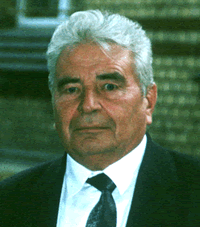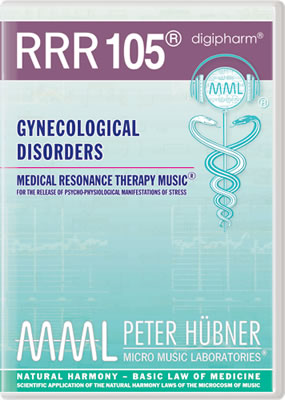|
Scientific Music Medicine |
| Home • Site Map • Research • Reports • Intern. Experts • Music Preparations • Fundamentals • Store • Contact |

Page 1
2

Prof. Dr. med. Gerassimowitsch
The Benefits of
Harmonic Information
in Digital Pharmaceutics

Prof. Dr. med.
G. Gerassimowitsch
President ASSOCIATION OF THE GYNAECOLOGISTS OF BELARUS
PROFESSORIAL CHAIR FOR GYNAECOLOGY at the MEDICAL UNIVERSITY OF MINSK
G. Gerassimowitsch
President ASSOCIATION OF THE GYNAECOLOGISTS OF BELARUS
PROFESSORIAL CHAIR FOR GYNAECOLOGY at the MEDICAL UNIVERSITY OF MINSK
The application of
Medical Resonance
Therapy Music®
for in-patient and
out-patient treatment
Extract from a guest lecture
at the medical faculty
at the University of Magdeburg
We medical professionals are united by the desire
to help sick people. In order to achieve this noble aim, we not only
use medicinal and surgical methods, but also devote
ourselves to methods without the use of drugs which have lately
become far more widespread.
Music is one of the oldest remedies; it is an old companion to curative treatments. As long ago as 600 years BC, Pythagoras believed that music possessed far greater healing powers than other remedies, emphasizing the universality of music in healing of both body and soul. Pythagoras’s claim was substantiated by Aristotle: he claimed that man’s pursuit of beauty was not just a matter of whim, but belonged to the indispensable attributes of human existence.
Ibn Sina did not only study the effects of the music on the sick, but researched every aspect of this phenomenon, including its effect on healthy people. This opened up the possibility of using the music as one of the most powerful preventative remedies against mental illnesses.
Music has a non-specific, stimulating, sympatholytic and sedative effect on the organism (G. Schipulin, Kohler et al). However, Peter Hübner’s music is a new musical phenomenon. The complicated character of the sound, its resonance, and other characteristics probably have a very strong influence on the organism. That is the reason why in the last 6 years, in many countries of the world, Medical Resonance Therapy Music® has successfully established itself both as a part of complex treatment and also as an independent method in various medical fields: in neurology, cardiology, pulmonology, pre and post-natal medicine, geriatrics, etc.
For two years, Peter Hübner’s Medical Resonance Therapy Music® has been successfully used in several hospitals in Belarus as a curative treatment without drugs: in obstetrics and gynecology, in cardiology, in pediatrics, in endocrinology, resuscitation, etc. Here, I would like to report on some aspects of using Medical Resonance Therapy Music® in obstetrics and gynecology.
“So last year, as a result of using Medical Resonance Therapy
Music®, we had no more serious
cases of toxemia, no complications in the postoperative
period and a fall in the number of premature births.”
Prof. Dr. med.
G. Gerassimowitsch
G. Gerassimowitsch
In gynecology, we have explored this method as the main
method in pre-operative preparation for routine myomectomies,
and it is in use today.
For comparison there was a control group comprising women who received a sedative during the pre-operative preparations.
All women from the first and second group were roughly the same age. In the case of all women, the cortisol level in the blood was determined on the day of admission, the day of the operation and 10-12 days after the operation.
This hormone was measured because it is an indicator for stress situations (in this case, the operation itself gave rise to such a stress situation). As the data collected shows, the cortisol level in both groups is very high at the beginning: 995 nmol/l.
In the Medical Resonance Therapy Music® group (in the following often referred to as MRT-Music® group), a sharp fall in the level of this hormone (by 39%) was recorded after the music had been used, and this fall can be seen as resulting from the pre-operative preparation using Medical Resonance Therapy Music®.
In contrast, the cortisol level in the control group fell only very slightly (by 9.2%). Here, the pre-operative preparation had been carried out using a conventional sedative therapy with drugs.
In the time following the operation, Medical Resonance Therapy Music® was included in the first 10-12 days’ treatment of the first group. In the control group conventional treatment methods were applied, that is, without Medical Resonance Therapy Music.
Measurement of the cortisol level on the 12th day following the operation showed a fall by a factor of 2.4 in the MRT-Music® group, whilst in the control group it had only fallen by a factor of 1.7. Furthermore, the women in the first group reported, from a subjective point of view, normalization of their sleep and a marked improvement in mood, their blood pressure became normal and their need for pain relieving medication clearly fell.
Additionally, the number of cases of anemia in the MRT-Music® group was 15% lower than in the control group. This shows us that, during the post-operative period, things went far better for the MRT-Music® group than for the control group.
Assessment of the emotional-personal sphere of the patients, carried out with the help of the Minnesota Multiphasic Personality Index (MMPI), clearly showed that initial MMPI profiles revealed significant individual differences for the female patients in terms of the norm values – right up to clear psychopathic disorders, where the level of the individual values sometimes reached 90 t-points. In the MRT-Music® group, an improvement in the mental state was registered at 88.9%, deterioration at 11.1%. In the control group the corresponding values were 10% and 20%. The entire average MMPI profile after treatment with Medical Resonance Therapy Music® never exceeded a reading of 50-55 t-points, which indicates a complete normalization of the mental functions.
As such, Medical Resonance Therapy Music® is a good and effective method without the use of drugs for preparing patients for surgery, as well as being of great assistance in the post-operative phase. It helps to reduce the stress status prior to surgery and ensures far better progress in the post-operative phase.
For comparison there was a control group comprising women who received a sedative during the pre-operative preparations.
All women from the first and second group were roughly the same age. In the case of all women, the cortisol level in the blood was determined on the day of admission, the day of the operation and 10-12 days after the operation.
This hormone was measured because it is an indicator for stress situations (in this case, the operation itself gave rise to such a stress situation). As the data collected shows, the cortisol level in both groups is very high at the beginning: 995 nmol/l.
In the Medical Resonance Therapy Music® group (in the following often referred to as MRT-Music® group), a sharp fall in the level of this hormone (by 39%) was recorded after the music had been used, and this fall can be seen as resulting from the pre-operative preparation using Medical Resonance Therapy Music®.
In contrast, the cortisol level in the control group fell only very slightly (by 9.2%). Here, the pre-operative preparation had been carried out using a conventional sedative therapy with drugs.
In the time following the operation, Medical Resonance Therapy Music® was included in the first 10-12 days’ treatment of the first group. In the control group conventional treatment methods were applied, that is, without Medical Resonance Therapy Music.
Measurement of the cortisol level on the 12th day following the operation showed a fall by a factor of 2.4 in the MRT-Music® group, whilst in the control group it had only fallen by a factor of 1.7. Furthermore, the women in the first group reported, from a subjective point of view, normalization of their sleep and a marked improvement in mood, their blood pressure became normal and their need for pain relieving medication clearly fell.
Additionally, the number of cases of anemia in the MRT-Music® group was 15% lower than in the control group. This shows us that, during the post-operative period, things went far better for the MRT-Music® group than for the control group.
Assessment of the emotional-personal sphere of the patients, carried out with the help of the Minnesota Multiphasic Personality Index (MMPI), clearly showed that initial MMPI profiles revealed significant individual differences for the female patients in terms of the norm values – right up to clear psychopathic disorders, where the level of the individual values sometimes reached 90 t-points. In the MRT-Music® group, an improvement in the mental state was registered at 88.9%, deterioration at 11.1%. In the control group the corresponding values were 10% and 20%. The entire average MMPI profile after treatment with Medical Resonance Therapy Music® never exceeded a reading of 50-55 t-points, which indicates a complete normalization of the mental functions.
As such, Medical Resonance Therapy Music® is a good and effective method without the use of drugs for preparing patients for surgery, as well as being of great assistance in the post-operative phase. It helps to reduce the stress status prior to surgery and ensures far better progress in the post-operative phase.
|
MEDICAL RESONANCE THERAPY MUSIC® Medical Music Preparations on CD |
|||
|
With kind permission of AAR EDITION INTERNATIONAL
© 1998- SCIENTIFIC MUSIC MEDICINE | Contact
Subject to change in the interests of scientific advancement.
© 1998- SCIENTIFIC MUSIC MEDICINE | Contact
Subject to change in the interests of scientific advancement.
